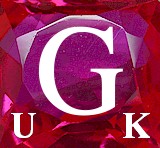|
HOME SPECTRA DATABASE COLOUR FILTERS THROUGH MY SPECTROSCOPE THE AUTHOR |
||
|
|
The Gemstone Images I have photographed the gemstones in daylight in order to establish a standard resolution of colour throughout and any reference to the colour of a gemstone relates to this lighting unless stated otherwise. This includes those images showing a variation in colour due to pleochroism. In the comparison Excel files colour change of a gemstone in tungsten light is also shown where it has been photographed in scattered light along with the appropriate spectrum. Otherwise any reference to colour change, or colour shift, is given in the “Comparison Notes". In the Principal Gemstones section of the database and in the pages entitled “Through my spectroscope” colour change is illustrated in more detail where relevant. The Spectra Images The spectra I have photographed using a tungsten fibre optic lamp. The images were captured through a small diffraction type spectroscope attached to a digital camera and coupled to the body tube of a monocular microscope. The advantage of this set-up is twofold. In photography it ensures maximum control to acquire an image and in teaching it provides a stable image which students can view without having to handle the specimen or the spectroscope. This is hands free spectroscopy.
CALIBRATION In most cases calibration was checked using a Beck prism spectroscope No.2522 with built in wavelength scale and tolerance allowed due to parallax limitation. In the case of some unusual, rarely encountered materials, spectra of known wavelength were introduced into the optical path during photographing. This was done using thin sections of materials doped with rare earth elements, (neodymium, erbium and thulium) certain liquids (Potassium permanganate and olive oil); and certain light sources (sodium, mercury vapour and tri-phosphor coated tubes and sunlight.) The method used was to superimpose one of these spectra on to the spectrum of a specimen being photographed. The main Fraunhofer lines in the solar spectrum, combined with the emission lines in a triphosphor lamp produced a useful spectrum in this respect. From there calculations were made between these known and the unknown positions of lines in the other spectra, using a nanometre - pixel related formula by computer to compile a comparison scale.
See my DECLARATION OF COPYRIGHT
Copyright John S. Harris - from the year 2000 to the current date. |
|
